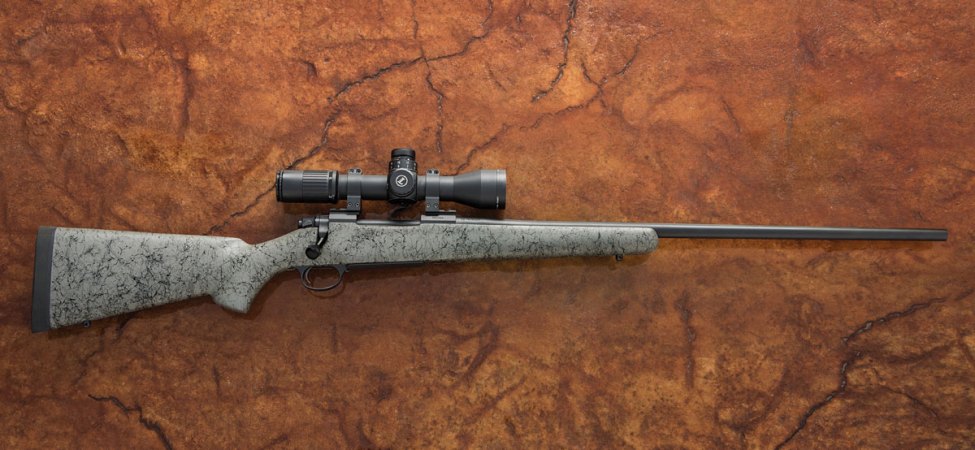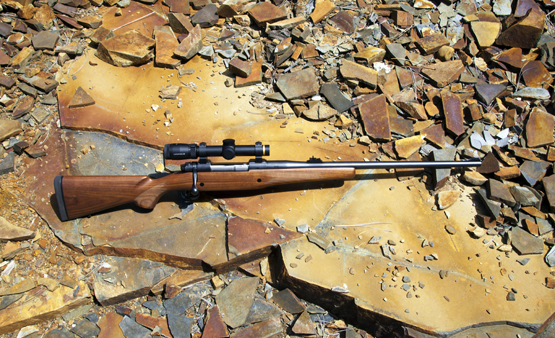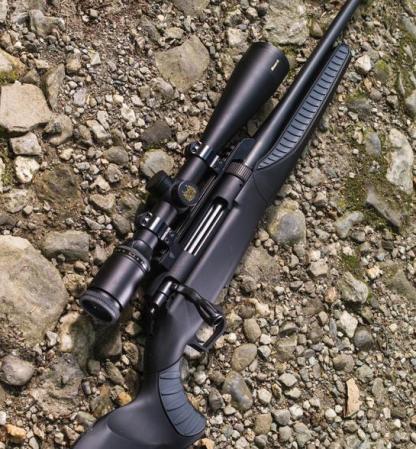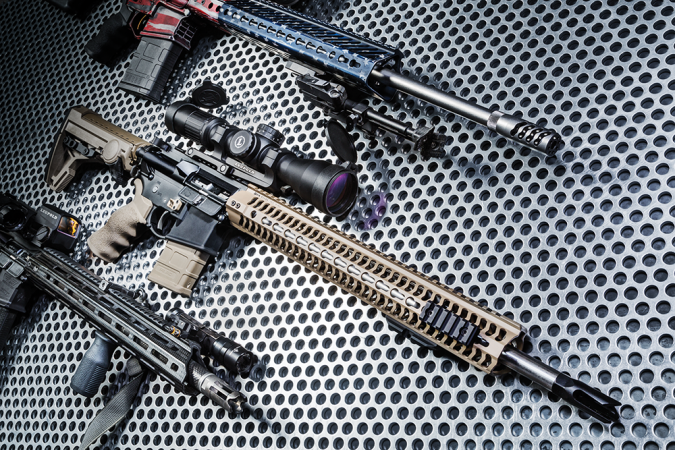We may earn revenue from the products available on this page and participate in affiliate programs. Learn More ›
Mauser. Is there any other word in the gun world as iconic? I don’t think so. Mauser is the wellspring from which all our bolt-action rifles are derived. Mausers–in their various iterations, along with the eponymous 7x57mm Mauser cartridge–ushered in the modern era of rifles. The name Mauser, like no other, also conveys a specific idea–many would argue it’s the ideal–of what a sporting rifle should be.
This ideal rifle is a two-lug bolt-action equipped with a large claw extractor that grips onto the cartridge as it is being fed from the magazine and doesn’t let go until the action is opened and the base of the cartridge comes in contact with a fixed ejector, kicking the brass free from the receiver. The rifle is fed from an internal magazine. A third lug, located at the rear of the bolt body, serves as a backup in case the forward lugs fail. Gas relief ports and a gas shield on the bolt shroud enhance the action’s safety. The action cocks as the bolt is opened, and it has a three-position wing safety. It is elegant, simple, and reliable. It is renowned for its durability and strength. It is also expensive enough to make Jay-Z’s cigar fall out of his mouth. An actual Mauser, made by Mauser itself, starts at $24,000.
This raises the question: Can the new Mauser M12 succeed as a “Mauser” in the eyes of American sportsmen? It is, after all, a very different rifle from the M98 crafted by Paul Mauser in the late 1800s.
New Direction
This new Mauser has a six-lug action, with three locking lugs stacked two-deep. The bolt lift to open the action is short, which is good, but it runs into the same issue many other three-lug designs have–the bolt lift is a bit stiff and takes extra effort to run from the shoulder. The reason for this stiffness is that opening the bolt cocks the action, and the effort to cam the firing pin into the cocked position needs to be accomplished over the shorter lift (roughly 60 degrees of travel versus 90 degrees for a two-lug action). But this is hardly a fatal flaw. It just takes some practice and getting used to.
Once the bolt is open and cocked, things smooth out nicely. During the evaluation, my M12, which is chambered in .30/06, ran flawlessly. The wide bolt body glided back and forth in the raceway of the receiver without any slop or wiggle. The rifle never failed to load a round from the detachable polymer magazine. Likewise, the action extracted and ejected every time.
The action has a large opening at the breech, making it easy to load single rounds in case the gun runs dry. This is one advantage of push-feed designs–there’s no need to seat the cartridge all the way into the magazine in order to load the rifle. Loading the magazine from the open breech on the M12 is also easily accomplished. The Germans designed an excellent magazine for this rifle.
**
Smart Stock**
The safety rolls smoothly through its three positions and, with a bit of practice, is easy to flick forward to “fire” as the rifle is brought to the shoulder.
The wood stock has a straight comb, a raised cheekpiece on the left-hand side, a comfortable radius in the rear grip, and a slender forend that seats nicely in the lead hand. It points and shoulders extremely well. Cosmetically, Mauser did a good job of incorporating the boxy action into the stock while trying to keep the lines graceful, but there’s only so much that can be done to hide that bulge in the middle of the rifle. The stock’s glossy finish and anemic panels of laser-cut checkering aren’t to my taste, but well-done checkering on production rifles is as hard to come by as a bighorn sheep tag.
The trigger on my sample was outstanding. It is a single-stage design that breaks just under 2 pounds. The rifle’s accuracy at the range was also quite good. My groups averaged 1.227 inches, with the smallest group coming in at .890 inches.
Depending on the scope used, the rifle will weigh between 8 and 8.5 pounds, which is right in the comfortable middle for a .30/06. Naked, my rifle tipped the scales at 6 pounds 9 ounces. The M12 is being offered in an array of other calibers as well, from .22-250 Rem. up to .338 Win. Mag. It can also be had with a synthetic stock, if desired, which lists for $1,499, compared to $1,799 for my wood model.
The name Mauser is sure to resonate with American hunters. But will they be able to look past the M12’s departures from the Mauser ideal? I think a little hands-on time with the rifle would be enough persuade many of them. Getting them to pick it up for the first time will be the trick.
Stats
Caliber: .30/06 Sprg.
Capacity: 5+1
Weight: 6 lb. 8 oz.
Trigger Pull: 1 lb. 13 oz.
Barrel Length: 21 ½ in.
Overall Length: 42 in.
Suggested Retail: $1,799
Contact: mauser-m12.com
Report Card
Overall: *** ½
Performance: B+
Design: A-
Price/Value: B
Accuracy: 1.227 in. avg. 5-shot group @ 100 yd. Smallest group .890 in. with Hornady 168-gr. M1 Garand.
**
Verdict:** A solid, capable hunting rifle built to high standards. Operates smoothly, delivers good accuracy, and has attractive design elements.























